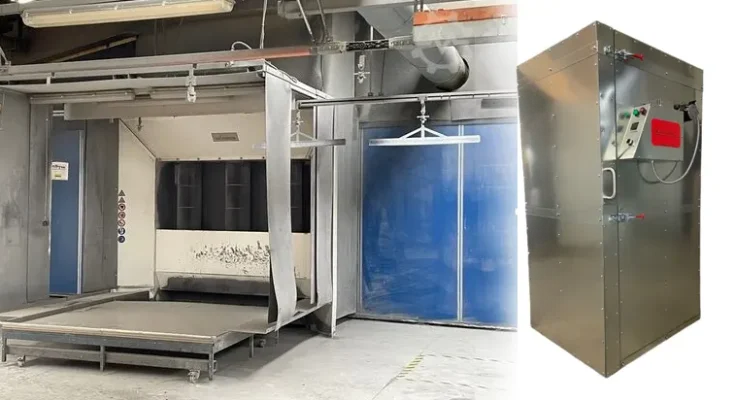Choosing the right powder coating oven size may seem straightforward, but it’s a decision that can impact efficiency, cost, and quality more than you’d expect. An oven that’s too small or too large for your needs can disrupt production and hurt your bottom line. Understanding the risks of an improperly sized oven is crucial for any operation aiming to maintain consistent, high-quality finishes.
Uneven Heat Distribution Leading to Coating Imperfections
A poorly sized powder coating oven can struggle to distribute heat evenly, leading to noticeable imperfections in the final coating. If the oven is too small, parts may be crowded, blocking airflow and creating cold spots. On the flip side, oversized ovens may not circulate heat effectively across the entire chamber, leaving some areas undercured.
These heat distribution issues result in coatings that can appear patchy or fail prematurely. The inconsistent curing can weaken the coating’s bond to the surface, reducing durability and resistance to wear. Investing in an appropriately sized oven ensures consistent airflow and heat distribution, minimizing the chances of uneven curing and maintaining a professional finish every time.
Increased Energy Consumption from Inefficient Heating
An improperly sized powder coating oven can become an energy hog, driving up operational costs. An oversized oven requires more energy to heat a larger chamber, even if only a portion of its capacity is used. Meanwhile, an undersized oven may need to work overtime to reach and maintain the required curing temperature for multiple cycles.
This inefficiency doesn’t just affect your energy bills—it can also increase wear on the oven’s components. Heating elements, fans, and other parts face additional stress, shortening their lifespan. Choosing the right size ensures optimal energy use, helping you save on costs while maintaining the reliability of your powder coating process.
Limited Capacity Restricting Production Scalability
A powder coating oven that’s too small can quickly become a bottleneck for growing operations. Limited capacity means fewer parts can be cured at once, slowing down production schedules and making it harder to meet increasing demand. As orders grow, the inability to scale can cost time, clients, and revenue.
Even with creative scheduling, an undersized oven limits flexibility. Repeatedly loading and curing parts can lead to inefficiencies and operator fatigue. A well-sized oven, on the other hand, provides enough room to handle current projects while offering the flexibility to expand operations without major interruptions.
Excessive Heat Loss Causing Prolonged Curing Times
In a mismatched powder coating oven, heat loss becomes a serious concern. Oversized ovens often have larger surfaces and openings, making it harder to retain consistent temperatures. This heat loss can extend curing times, leading to delays and increased energy consumption.
Additionally, undersized ovens may struggle to maintain heat if they’re loaded to capacity or used continuously for back-to-back cycles. This mismatch can create inefficiencies that ripple through your entire production process. By selecting an oven with properly insulated panels and a size suited to your workload, you can minimize heat loss and maintain efficient curing times.
Inconsistent Temperature Control Damaging Coating Quality
Maintaining consistent temperature control is critical for achieving a durable, uniform powder coating. An improperly sized oven can struggle with temperature fluctuations, either overheating smaller chambers or underheating larger ones. This inconsistency can lead to defects like bubbling, cracking, or peeling in the final finish.
When the temperature is uneven, certain parts may not reach the required curing threshold, while others could be overexposed to heat. These flaws not only compromise the aesthetic appeal but also reduce the long-term performance of the coating. A properly sized powder coating oven ensures precise temperature regulation, providing reliable results across every cycle.
Higher Maintenance Costs Due to Overworked Components
An undersized or oversized powder coating oven places unnecessary strain on its components. Smaller ovens often run continuously at maximum capacity, causing fans, heating elements, and other critical parts to wear out faster. On the other hand, oversized ovens may require more maintenance to manage their larger, more complex systems.
The increased wear and tear can lead to frequent repairs and unplanned downtime, disrupting production and adding to maintenance expenses. Choosing an oven that matches your operational needs helps reduce stress on components, prolongs equipment life, and keeps maintenance costs manageable.





